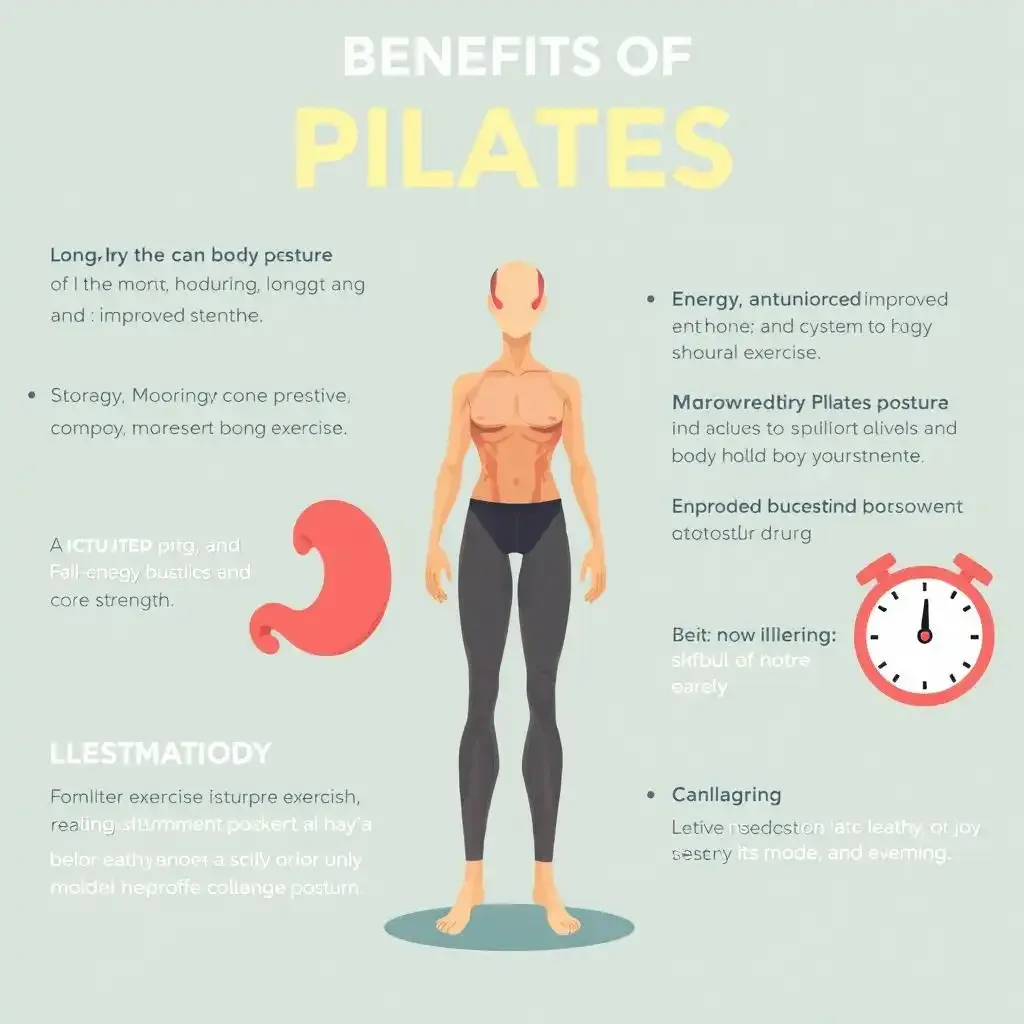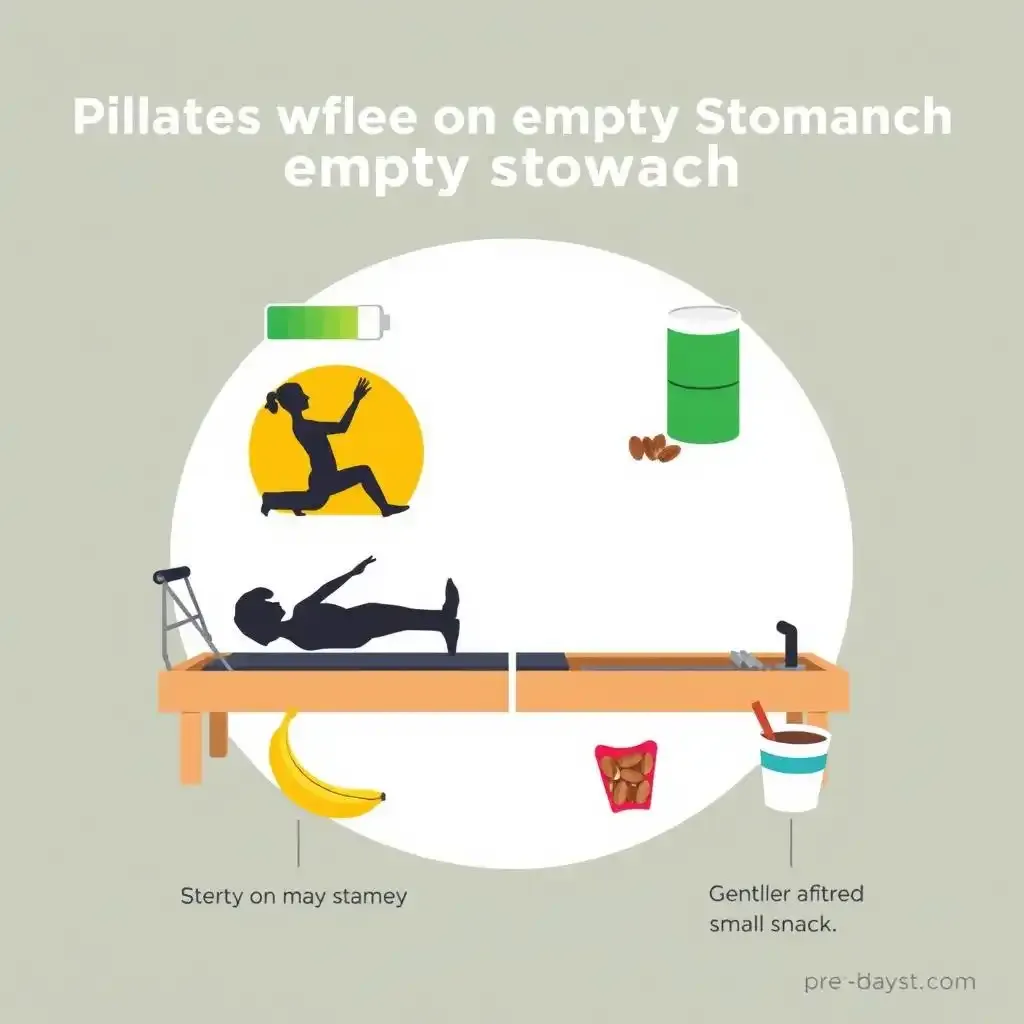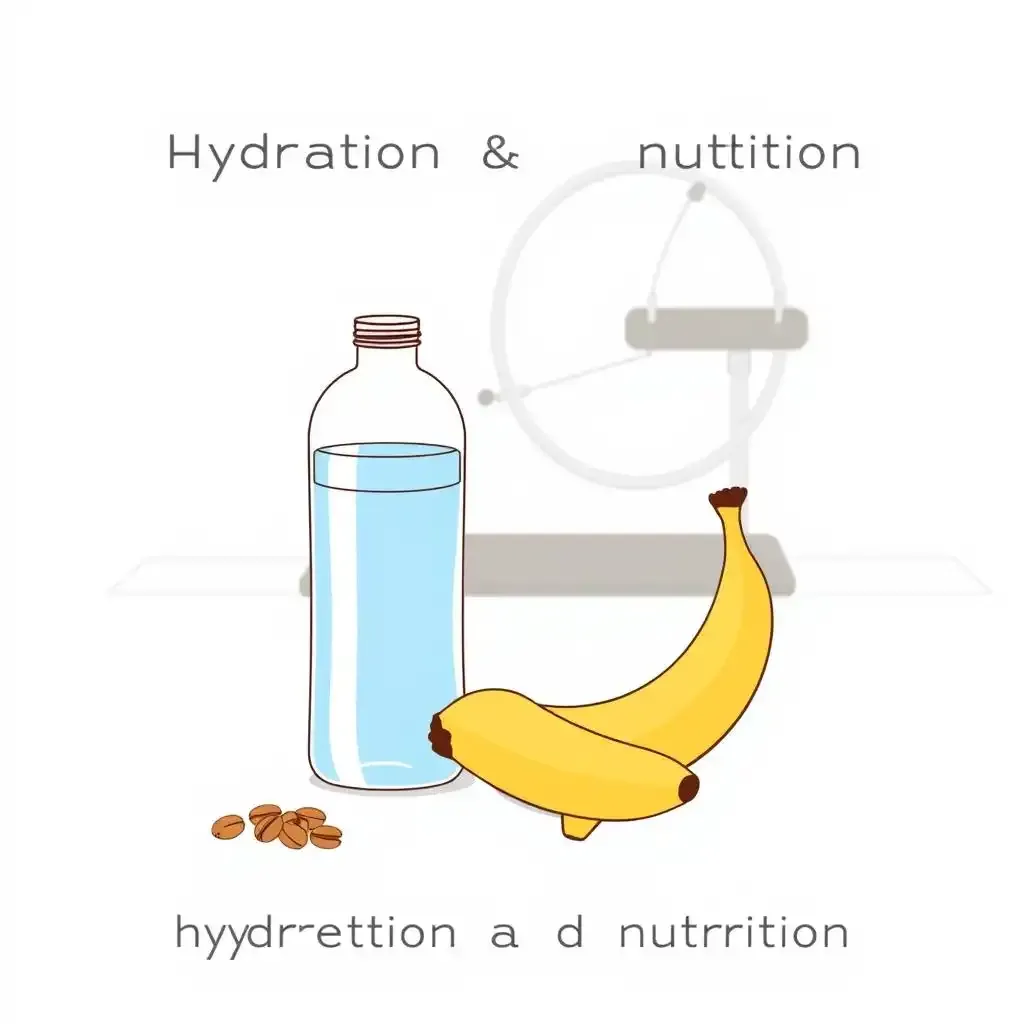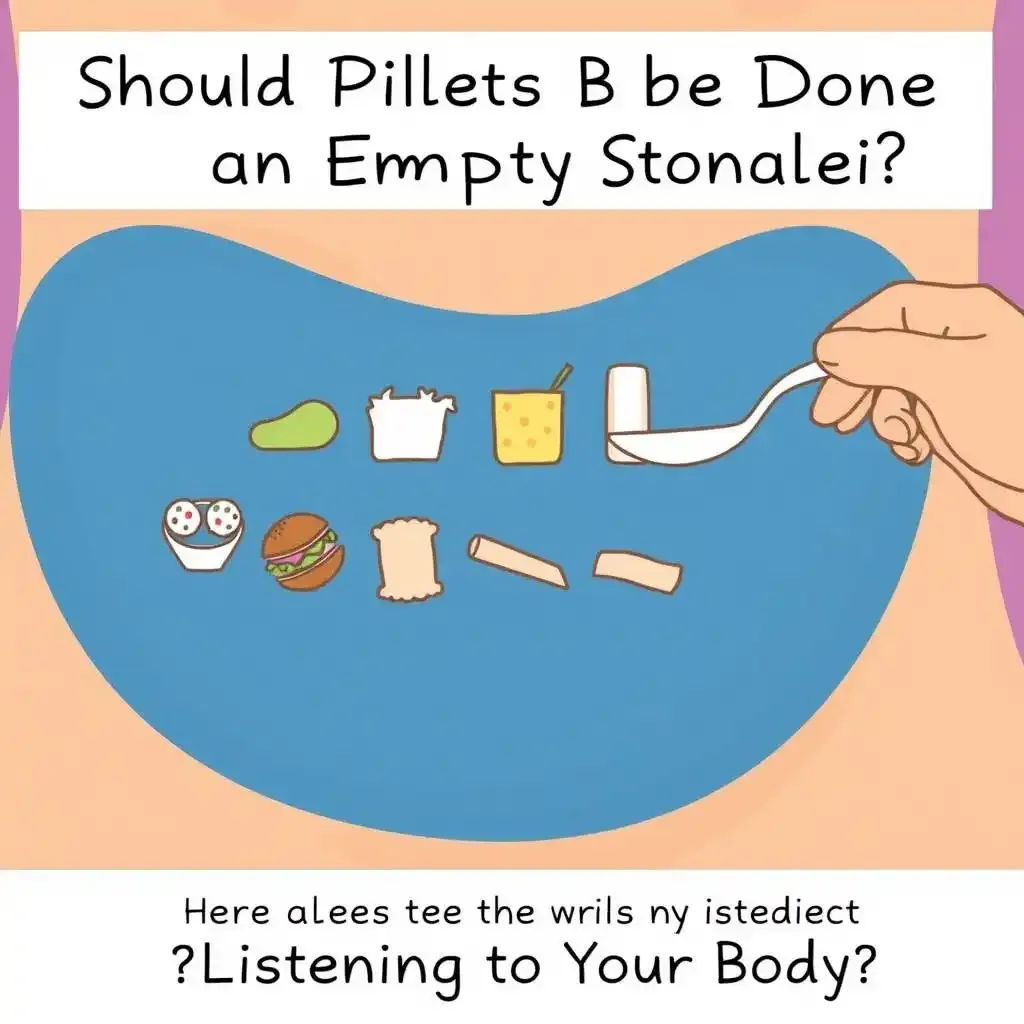Table of Contents
So, you're curious about Pilates, that amazing workout that lengthens and strengthens your muscles. But there's a question buzzing in your mind: should Pilates be done on an empty stomach? It’s a totally valid question! Many of us are juggling busy schedules, and figuring out the best time to squeeze in a workout can be tricky. Add to that the whole food-before-exercise debate, and it’s enough to make your head spin. This article will give you the lowdown on whether or not working out on an empty stomach is the best approach for your Pilates practice. We'll explore the pros and cons, offer some practical tips, and help you decide what works best for *your* body. Remember, listening to your body is key! At kizworld, we believe in empowering you with the knowledge to make informed decisions about your fitness progression. Let's examine in!
Should Pilates Be Done On Empty Stomach? Ultimate Guide
Should Pilates Be Done on an Empty Stomach? The Truth About PreWorkout Fuel
Okay, so you're thinking about Pilates, right? Awesome choice! It’s like a secret weapon for your body. But should you do it on an empty stomach? That's the million-dollar question. I've been doing Pilates for years, and I've learned a thing or two. Think of your stomach as a gas tank for your workout. If you’re doing a super gentle class, a nearly empty tank might work. But if you're tackling something more intense, you need fuel! It's like trying to run a marathon on an empty stomach – not gonna happen! A little something before class can make a huge difference in your energy levels and how well you can perform those amazing Pilates moves. Need more tips on how Pilates can totally change your life? Check out my post on how Pilates changed my life!
For me, a light snack about an hour before is perfect. A banana, a small handful of nuts, or even a bit of yogurt does the trick. But remember, everyone's different. What works for me might not work for you. Experiment to figure out what fuel your body needs. Sometimes, even just a glass of water is enough to make a difference. You should always prioritize hydration, no matter what you eat before your workout. Want to know if Pilates counts as cardio? Read my other article about is Pilates cardio?
Pre-Pilates Snack | Pros | Cons |
|---|---|---|
Banana | Easy to digest, provides potassium | Can cause a sugar rush for some |
Small handful of nuts | Healthy fats, protein, sustained energy | Can be hard to digest for some |
Yogurt | Protein, calcium, probiotics | Might be too heavy for some |
I always recommend listening to your body. If you feel hungry before your Pilates session, grab a light snack! But if you feel perfectly fine on an empty stomach, go for it! However, if you start feeling lightheaded or weak during your workout, it’s a clear sign that you need to fuel up next time. It's all about finding that sweet spot between feeling energized and avoiding a sluggish workout. This is important if you want to see if Pilates is good for you!
One time, I tried doing a super intense Pilates reformer class on a completely empty stomach. Big mistake! I felt weak and shaky halfway through, and I couldn't fully engage my core muscles. It was a valuable lesson learned – always listen to your body's cues! It's important to remember that even though Pilates is amazing for core strength, it's still a workout. You need the right fuel to perform it safely and effectively. Maybe you’re wondering if Pilates helps with weight loss? Check out my article on is Pilates good for weight loss?
- Hydrate well before your Pilates session.
- Experiment with different light snacks to see what works best for you.
- Listen to your body and adjust your pre-workout fuel as needed.
Remember, Pilates is all about building strength and flexibility, not about pushing your body to its absolute limit. It's a process, not a race. Take it easy, listen to your body, and enjoy the process! If you are curious about how many calories Pilates burns, you should check my article about does Pilates burn calories?
"The body benefits from movement, and the mind benefits from stillness." - Sakyong Mipham
Pilates on an Empty Stomach: Benefits and Drawbacks
Okay, let's talk Pilates and empty stomachs – a match made in fitness heaven? Maybe, maybe not! It's like choosing between a supercharged sports car (fuelled up!) and a slightly sputtering bicycle (empty tank). A gentle Pilates session? You might be fine on an empty stomach. It’s like a leisurely stroll in the park – you don't need a huge meal. But a killer reformer class? Whoa, hold your horses! You’ll need some fuel. Think of it as this: would you try to run a marathon on an empty stomach? Probably not! Similarly, a challenging Pilates session requires energy. For me, a light snack an hour before helps. A small banana or a few almonds does the trick. But this is *my* experience; your perfect pre-Pilates fuel might be totally different.
I once tried a hardcore Pilates session on an empty stomach. Big mistake! I felt shaky and weak, and my core strength totally suffered. It was a humbling experience, let me tell you! That’s why I always suggest listening to your body. If you’re feeling peckish before class, grab a small, easily digestible snack. If you feel great without eating beforehand, go for it. But if you start feeling faint or dizzy during class, adjust your fuel strategy for next time. Remember, consistency is key, and you want to feel good during your workout, not miserable. Want to know how Pilates can help you? Check out my post on how Pilates can help!
Pre-Pilates Snack | Pros | Cons |
|---|---|---|
Banana | Easy to digest, potassium boost | Might cause a sugar rush |
Small handful of nuts | Healthy fats, sustained energy | Could be hard to digest |
Yogurt | Protein, calcium | Might be too heavy |
The key is finding the right balance. You want enough energy to strength through your workout but not so much that you feel sluggish or bloated. It's a delicate dance, but once you find your rhythm, you'll be amazed at the difference it makes. And remember, hydration is your secret weapon, regardless of whether you eat beforehand or not! Need to know if Pilates is cardio? Check out this article about is Pilates cardio?
One thing I’ve learned is that listening to your body is paramount. Every body is different, and what works for one person might not work for another. Don't be afraid to experiment to uncover what fuels you best before Pilates. Think of it as a personal experiment to find your optimal Pilates performance. It’s all about finding your sweet spot and maximizing your gains. Want to know more about how Pilates has changed my body? Check out this article on how Pilates changed my body!
- Hydrate, hydrate, hydrate!
- Experiment with small, easily digestible snacks.
- Listen to your body's cues – it's the ultimate guide.
Pilates is not a race; it's a process towards a stronger, more flexible you. Take it easy on yourself, pay attention to your body’s signals, and enjoy the process. And remember, consistency is key for seeing results! Feeling curious about how Pilates can change your life? Check out this post on how Pilates changed my life.
"The difference between ordinary and extraordinary is that little extra." - Jimmy Johnson
Pilates on an Empty Stomach: Benefits and Drawbacks
Hydration and Nutrition Strategies for Your Pilates Practice
Hydration: Your Pilates Powerhouse
Okay, let's talk hydration. Think of your body like a perfectly tuned Pilates reformer machine – it needs the right lubrication to work smoothly! Water is your secret weapon for a fantastic Pilates session. Before you even think about a snack, drink a big glass of water. It's like prepping your body for the workout. Dehydration can lead to muscle cramps, dizziness, and overall blah-ness. Nobody wants that during Pilates! I usually drink a big glass of water about 30 minutes before class and sip on some more during. It keeps me feeling energized and ready to go. If you're curious about how Pilates can change your body, check out my post on how Pilates changed my body.
- Drink water before, during, and after your Pilates session.
- Listen to your body and adjust your hydration strategy as needed.
- Carry a water bottle to your Pilates class.
Fueling Up: Smart Snacks for Strong Pilates
Now, let's chat about pre-Pilates snacks. We're not talking about a full-blown meal here; we're talking about a little something to give your body a boost. Think of it as adding a little extra fuel to your car before a long drive. A light snack, about an hour before your session, can make a huge difference. I often grab a banana – it's easy to digest and gives you a quick energy boost. You could also try a small handful of nuts or a bit of yogurt. The key is to find something light that won't weigh you down. I once tried a huge sandwich before Pilates and spent the whole class feeling bloated! Learn from my mistakes! If you're wondering if Pilates is good for you, check out this article:
Snack | Pros | Cons |
|---|---|---|
Banana | Easy digestion, potassium | Might cause a sugar rush |
Nuts | Healthy fats, protein | Can be hard to digest |
Yogurt | Protein, probiotics | Might be too heavy |
Hydration and Nutrition Strategies for Your Pilates Practice
Should Pilates Be Done on an Empty Stomach? Listening to Your Body
Okay, so we've talked snacks, we've talked hydration, but the real MVP in this whole "Pilates on an empty stomach" debate? Your body! It's the ultimate boss, the final say. Seriously, forget what some fitness guru on Instagram says; your body knows best. Think of it like this: you wouldn't force a car to run on empty, right? You’d fill up the tank! Your body's the same. If you’re feeling hungry before Pilates, grab a small, easily digestible snack. A banana, a handful of nuts – something to give you a little oomph. If you feel totally fine without anything, then rock on! But if you start to feel dizzy or weak during your workout? That's your body screaming, "Hey, I need fuel!" Don’t ignore it. Listen to those signals! Check out my post on for more info on listening to your body.
I've had those "empty stomach Pilates" disasters myself. One time, I tried a super intense reformer class without eating anything beforehand. Let's just say I spent more time gripping the reformer than gracefully performing the exercises! I was shaky and weak, and my form suffered. Lesson learned: fuel is your friend. It's not about being a super-human fitness machine; it's about working out safely and effectively. And that means listening to your body's needs. If you're wondering whether Pilates can really help you lose weight, check out this article on .
Scenario | Body Signals | Action |
|---|---|---|
Before Pilates | Hungry, low energy | Eat a light snack |
During Pilates | Dizzy, weak, shaky | Stop and rest; hydrate |
After Pilates | Exhausted, but satisfied | Hydrate and refuel |
Remember, Pilates is about building strength and flexibility, not about pushing yourself to the brink of collapse. It's a progression, not a race! Be kind to yourself, and your body will thank you. Want to know more about how Pilates has changed my life? Check out my post .
Another time, I tried a super intense class on a full stomach. Big mistake number two! I spent the entire session feeling bloated and uncomfortable. The focus wasn't on my core, but on my stomach. It was a reminder that finding that sweet spot is key. It’s all about balance. It's about finding what works best for *you*. Every body is different! If you’re curious about whether Pilates is a good form of cardio, read this post: .
- Pay attention to your hunger cues.
- Don't ignore your body's signals of fatigue or weakness.
- Experiment to find your perfect pre-Pilates fuel.
"Listen to your body. It's the only one you've got." - Unknown
Should Pilates Be Done on an Empty Stomach? Listening to Your Body
Final Thought
Ultimately, whether or not you should do Pilates on an empty stomach depends entirely on your individual needs, your workout intensity, and how your body feels. There’s no one-size-fits-all answer. Experiment, listen to your body, and adjust your routine accordingly. Remember, consistency and mindful movement are key to a successful Pilates practice. Happy stretching!